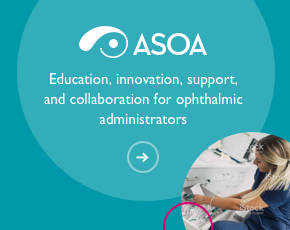2025 MEDICARE PHYSICIAN FEE SCHEDULE (MPFS)
PROPOSED RULE RELEASED
Includes 2025 Quality Payment Program Proposals
Proposed 2025 Conversion Factor: $32.36
This afternoon, CMS released the CY 2025 MPFS Proposed Rule. CMS also released a press release, a physician fee schedule fact sheet, and a shared savings program fact sheet. ASCRS will be submitting comments.
2025 MPFS Conversion Factor
CMS estimates the CY 2025 PFS conversion factor to be $32.36.
The CY 2025 proposed MPFS conversion factor of $32.36 is a decrease of approximately 2.80% ($0.93) from the CY 2024 MPFS conversion factor (CF) of $33.2875.
CY 2025 proposed MPFS conversion factor reflects the following:
- the 0.00% overall update required by the Medicare Access and CHIP Reauthorization Act of 2015 (MACRA);
- the expiration of the 2.93% increase in payment for CY 2024 mandated by Congress in 2024;
- an estimated 0.05% positive budget neutrality adjustment.
According to the CMS estimated impact on total allowed charges by specialty (Table 128), ophthalmology will see an overall reduction of -1%. For CY 2025, the proposed Medicare payment rate for 66984 is $522.23, a 3% decrease from the 2024 Medicare payment of $537.26. Please see the Impact on CY 2025 Payment for Selected Procedures table.
We will continue to advocate with the medical and surgical community to prevent Medicare physician payment cuts.
Improving Global Surgery Payment Accuracy
Transfer of Care Modifiers for Global Packages
For CY 2025, CMS is proposing to broaden the applicability of the transfer of care modifiers for global packages and require the use of the existing modifiers (-54, -55, and -56) for all 90-day global surgical packages in any case when a practitioner (or another practitioner from the same group practice) expects to furnish only the pre-operative (-56), procedure (-54), or post-operative portions of a global package (including but not limited to when there is a formal, documented transfer of care as under current policy or an informal, non-documented but expected, transfer of care). CMS is also proposing for practitioners to report the transfer of care modifiers in all transfer of care scenarios.
New Add-On Code for Post-operative Care Services; GPOC1
For CY 2025, CMS is proposing a new add-on code, GPOC1, for post-operative care services to more appropriately reflect the time and resources involved in post-operative visits to reimburse additional resources for those practitioners who were not involved in furnishing the surgical procedure.
“Complexity” Add-on Code
For CY 2025, CMS is proposing to allow payment of the O/O E/M visit complexity add-on code G2211 when the O/O E/M base code is reported by the same practitioner on the same day as an annual wellness visit (AWV), vaccine administration, or any Medicare Part B preventive service furnished in the office or outpatient setting.
Drugs and Biological Products Paid Under Medicare Part B; Discarded Drug Amounts
Over the last few years, CMS finalized many policies which established a refund for discarded amounts of certain single-dose container or single-use package drugs under Part B.
In this proposed rule, CMS is proposing to clarify several policies implemented in CY 2023 and CY 2024, including: exclusions of drugs for which payment has been made under Part B for fewer than 18 months from the definition of refundable single-dose container or single-use package drug; and identifying single-dose containers.
They are also proposing to require the JW modifier if a billing supplier is not administering a drug, but there are discarded amounts discarded during the preparation process before supplying the drug to the patient.
In addition, CMS is proposing to include injectable drugs with a labeled volume of 2 mL or less and that lack the package type terms and explicit discard statements in their product labeling, to be single-dose containers in the definition of refundable single-dose container or single-use package drugs.
Medicare Telehealth Services
For CY 2025, CMS is proposing to add several services to the Medicare Telehealth Services List on a provisional basis.
Interactive Telecommunications System
CMS is proposing that, beginning January 1, 2025, an interactive telecommunications system may include two-way, real-time audio-only communication technology for any telehealth service furnished to a beneficiary in their home if the distant site physician or practitioner is technically capable of using an interactive telecommunications system but the patient is not capable of, or does not consent to, the use of video technology.
Distant Site Practitioner
In addition, they are proposing that through CY 2025, CMS will continue to permit the distant site practitioner to use their currently enrolled practice location instead of their home address when providing telehealth services from their home.
Direct Supervision
CMS is also proposing, for a certain subset of services that are required to be furnished under the direct supervision of a physician or other supervising practitioner, to permanently adopt a definition of direct supervision that allows the physician or supervising practitioner to provide such supervision through real-time audio and visual interactive telecommunications. They are specifically proposing that the physician or supervising practitioner may provide such virtual direct supervision for services furnished incident to a physician’s service when they are provided by auxiliary personnel employed by the physician and working under his or her direct supervision and for which the underlying HCPCS code has been assigned a PC/TC indicator of office or other outpatient visit for the evaluation and management of an established patient who may not require the presence of a physician or other qualified health-care professional.
For all other services furnished under the direct supervision of the supervising physician or other practitioner, they are proposing to continue to define “immediate availability” to include real-time audio and visual interactive telecommunications technology only through December 31, 2025.
Teaching Physicians
In addition, the rule proposes to continue current policy to allow teaching physicians to have a virtual presence for purposes of billing for services furnished involving residents in all teaching settings, but only in clinical instances when the service is furnished virtually through December 31, 2025. This virtual presence will continue to meet the requirement that the teaching physician be present for the key portion of the service.
Quality Payment Program
MIPS Value Pathways (MVPs)
CMS is proposing 6 new MVPs for 2025, including the Complete Ophthalmologic Care MVP.
Although the proposed ophthalmic MVP is a significant improvement over the draft MVP that CMS released previously and takes into account many of our quality measure suggestions, particularly for cataract surgeons, it is still incomplete. This proposed MVP does not include our suggested measures for refractive or cornea subspecialists. As it is proposed, this MVP would not include any specialty-specific quality measures for refractive or cornea subspecialists.
In addition, CMS included a request for information on the timeline to sunset traditional MIPS and move to MVPs. There is no proposal, however, CMS introduced a potential timeline that identifies the 2029 performance year as a potential for sunsetting MIPS. ASCRS maintains that the traditional MIPS pathway should continue to be an option.
Performance Threshold Proposals
CMS is proposing to keep the performance threshold at 75 points for the 2025 performance year.
Performance Category Weights
For the 2025 performance year/2027 payment year, the performance category weights are the following:
- 30% for the Quality performance category.
- 30% for the Cost performance category.
- 15% for the Improvement Activities performance category.
- 25% for the Promoting Interoperability performance category.
Quality
CMS will maintain a data completeness threshold of 75% for 2027 and 2028 performance periods.
Cost
CMS is proposing the following significant changes to the cataract cost measure in 2025:
- Name change: Cataract Removal with Intraocular Lens (IOL) Implantation [previously Routine Cataract Removal with IOL Implantation]
- Reduced exclusions: The proposed revised measure includes patients with certain previously excluded ocular conditions, such as glaucoma and macular degeneration, in the measure cohort.
- Increased Included Costs: Added Dextenza, IHEEZO, and expanded list of services included in the measure’s cost calculation.
CMS is also proposing to change the way in which they score cost measures beginning with the 2024 performance period. Rather than creating scoring deciles based on percentiles, CMS is proposing to use standard deviations. This would likely decrease the likelihood of inappropriately low scores for measures that have little variation in total.
Improvement Activities
CMS is proposing to remove two of the most popular improvement activities among ophthalmologists beginning in 2025: IA_EPA_1 (24/7 Patient Access) and IA_CC_1 (Close Referral Loop).
CMS is also proposing significant changes to how the category is reported by proposing to remove activity weights (medium vs high) and require the following instead:
- Those in MVPs, and clinicians, groups, and virtual groups with the small practice, rural, non-patient facing, or health professional shortage area special status must attest to 1 activity.
- All other clinicians, groups, and virtual groups must attest to 2 activities.
A fact sheet is available on the CY 2025 Quality Payment Program proposed changes.
Additional Details to Come
For questions about the proposed rule, please contact ASCRS Associate Director of Government Relations, Amanda Wiegrefe at [email protected]
ASCRS is reviewing the 2,248-page proposed rule, and additional information will be detailed in upcoming editions of Washington Watch Weekly.



